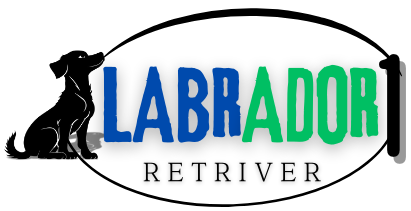English vs American Lab: Which Labrador Is Right for You?
Bringing a Labrador Retriever into your life is one of the most rewarding decisions you’ll ever make. Their loyalty, intelligence, and loving nature are just a few of the reasons why Labs have been America’s favorite dog breed for decades. But as you dive deeper into your research, you may come across two terms that spark questions: English Lab and American Lab. What’s the difference? And more importantly—which Labrador is right for you?
This comprehensive guide will walk you through the key differences between English and American Labs so you can confidently choose the one that best fits your lifestyle, energy levels, and goals.
Table of Contents
English vs American Lab: A Quick Overview
When you hear “English Lab” and “American Lab,” you’re not looking at two separate breeds—you’re looking at two distinct types of the same breed with different build, temperament, and purpose.
Origins and Purpose
- English Labs are often bred for conformation shows (dog shows) and companionship. Their lineage emphasizes physical appearance, calm demeanor, and a sturdy build.
- American Labs, on the other hand, are bred for field trials and hunting. Their focus is performance, endurance, and responsiveness in high-energy settings.
Notwithstanding these variations, the American Kennel Club (AKC) classifies both varieties as Labrador Retrievers.
Side-by-Side Comparison
| Trait | English Lab | American Lab |
|---|---|---|
| Build | Shorter, stockier, broad head | Taller, leaner, athletic build |
| Temperament | Calm, gentle, laid-back | Energetic, alert, driven |
| Purpose | Show, companion | Work, hunting, field trials |
| Coat | Thicker, dense | Sleek, slightly less dense |
| Ideal for | Families, relaxed homes | Active owners, outdoor lovers |
Physical Characteristics That Matter
Before making your choice, understanding how these Labs differ physically can help you visualize the dog that will fit into your world.
Size and Weight
- English Labs tend to be more compact, with males ranging from 60–80 lbs and females from 55–70 lbs.
- American Labs have a leaner frame. Males typically weigh 65–80 lbs, and females about 55–70 lbs.
- American Labs often appear taller due to their long legs and athletic stature.
Coat Type and Grooming
Both types have double coats that are water-resistant—perfect for retrieving in various weather conditions. However:
- English Labs often have a thicker coat, which means slightly more shedding.
- Weekly brushing helps minimize loose fur and keeps their coat shiny.
- Regular nail trims, ear checks, and the occasional bath round out their grooming needs.
Temperament and Behavior: What to Expect Daily

How a dog fits into your routine is just as important as how they look.
Energy Levels and Daily Needs
- English Labs are known for their mellow personality. They’re perfectly content with a couple of walks a day and some indoor playtime.
- Action is the foundation of American Labs. They require a lot of physical activity every day, such as swimming, agility sports, long runs, or retrieval exercises. Without this outlet, they might become destructive.
If you have a backyard and lead a highly active lifestyle, the American Lab could be your perfect adventure buddy. If you’re more into cozy evenings and slower weekends, the English Lab might be a better fit.
Trainability and Intelligence
Both types are incredibly smart, which makes training a pleasure. But the style of training they respond to can vary.
- English Labs respond well to food-based rewards and short, consistent sessions.
- American Labs thrive on structured training routines and mental stimulation. They’re especially strong performers in working roles such as search-and-rescue or service dog tasks.
Lifestyle Compatibility: Choosing Based on How You Live
This is where your personality, schedule, and household really come into play.
For Families with Children
- English Labs are often described as patient, gentle, and low-key—ideal for homes with small children or elderly family members.
- They’re content to follow you from room to room, nap at your feet, or engage in calm backyard play.
For Active Individuals or Hunters
- American Labs have the drive and stamina that appeals to athletes, hikers, and those who enjoy the outdoors.
- If you’re someone who likes to rise early and spend the day moving, this Lab will match your pace step for step.
Health and Longevity
Like all dogs, both types of Labs are prone to certain health issues—but lifestyle and genetics can play a huge role in outcomes.
Common Health Conditions
Both varieties are susceptible to:
- Hip and elbow dysplasia
- Progressive retinal atrophy (PRA)
- Obesity, especially if not exercised properly
However, because English Labs are generally stockier, they may be more prone to joint strain. American Labs, being more active, are more likely to suffer soft-tissue injuries from overexertion.
Life Expectancy
With proper care, both types typically live between 10–12 years. Prioritizing annual vet visits, vaccinations, and a nutritious diet can significantly enhance their quality of life.
Feeding and Nutrition: What to Know Before You Shop

Feeding isn’t one-size-fits-all, especially when you’re dealing with different activity levels.
Nutritional Needs Based on Energy Level
- English Labs: Fewer calories due to their sedentary nature. High-quality kibble with moderate protein and fat is best.
- American Labs: Require more calories and protein to sustain energy levels, especially if they’re regularly active.
Feeding Table for Reference
| Age Range | Weight Range | Recommended Daily Calories | Best Food Type |
|---|---|---|---|
| Puppy (2–12 mo) | 10–50 lbs | 990–1980 | High-protein puppy kibble |
| Adult (1–7 yrs) | 55–80 lbs | 1100–2100 | Balanced adult formula |
| Senior (8+ yrs) | 55–75 lbs | 900–1800 | Low-fat senior blend |
Look for brands with meat as the first ingredient, and avoid fillers like corn or soy. Some well-reviewed options include:
- Hill’s Science Diet
- Blue Buffalo Wilderness
- Orijen Original
Cost and Commitment
Labradors are an investment—not just financially, but emotionally and time-wise.
Initial vs Ongoing Costs
- Initial Purchase: $800–$2,000, contingent on location, lineage, and breeder reputation
- Ongoing Annual Costs:
- Vet visits: $300–$600
- Food: $500–$700
- Grooming: $100–$300
- Toys, gear, and training: $300–$500
You should budget around $1,500–$2,500 annually to care for your Labrador properly.
Breeder vs Rescue: How to Find Your Labrador
Whether you’re looking to buy or adopt, choosing the right source is essential for your dog’s long-term health and happiness.
How to Find a Reputable Breeder
- Look for breeders registered with the AKC or your country’s kennel club
- Ask to see health clearances for hip, eye, and elbow conditions
- Be wary of “too good to be true” prices or sellers with multiple litters at once
Rescuing a Lab
You can find purebred Labs and Lab mixes in rescues and shelters.
- Rescuing gives a dog a second chance.
- Rescue organizations like Lab Rescue LRCP or Retriever Rescue of Colorado specialize in this breed.
Real-Life Stories from Labrador Owners
From an English Lab Owner
“Maggie is like our furry therapist. She’s calm, gentle, and never leaves my toddler’s side. I couldn’t imagine a better family dog.” — Sarah, mom of two
From an American Lab Owner
“Every weekend, Duke and I hike trails for miles. His energy is endless, and he’s up for anything. He pushes me to stay active!” — Marcus, outdoor enthusiast
These stories highlight how lifestyle alignment makes all the difference.
Conclusion: Your Labrador, Your Lifestyle
Choosing between an English vs American Lab isn’t about which one is better—it’s about which one is better for you.
Ask yourself:
- Do you want a calm companion or a high-energy partner?
- Are you a homebody or an adventurer?
- Do you have young kids or live alone?
Both Labs are intelligent, loving, and loyal—what matters most is giving them the life they’re built for.
FAQs: English vs American Lab

What is the main difference between English and American Labs?
English Labs are bulkier and calmer, bred for show and companionship. American Labs are leaner and more energetic, bred for field work.
Are English Labs easier to train?
They can be, especially for first-time dog owners, due to their calm demeanor and focus on food rewards.
Which type is better for families?
English Labs typically do better in family settings, especially with young children, due to their patient and relaxed nature.
Can American Labs live in apartments?
It’s possible, but not ideal unless you can provide hours of daily physical activity and mental stimulation.
How do I know which type a breeder is offering?
Ask about the dog’s lineage and purpose of breeding (show vs field). Also, observe the puppy’s build and behavior.
Ready to Find Your Perfect Lab?
If you’re still unsure which Lab is right for you, consider visiting a local breeder or rescue and meeting both types in person. Their personalities will shine through—and you’ll know when it’s the right match.
👉 Take our Labrador Lifestyle Quiz or connect with a local rescue to start your journey!







